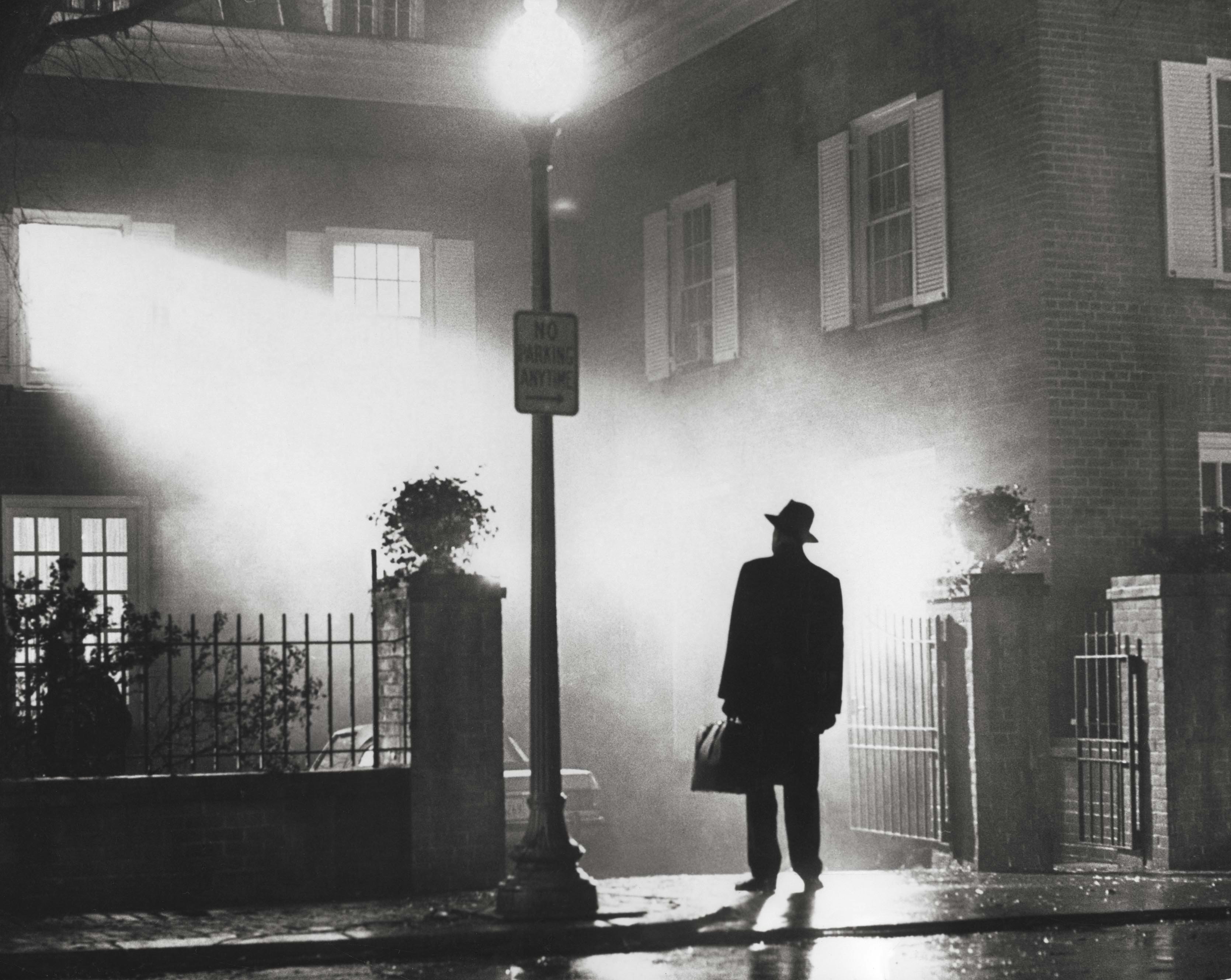
One of the scariest movies of all time begins on a game show.
In February 1961, on Groucho Marx’s You Bet Your Life, author William Peter Blatty won $10,000.
Appearing as a Saudi prince, a persona he invented when he came to Hollywood in the late ‘50s, Marx eventually compelled Blatty to drop the act when Blatty revealed himself as the writer of a newly-published comedy book Which Way to Mecca, Jack? When Blatty won his money, Marx asked him what he planned to do with it. The eventual bestselling writer and Oscar winner for Best Adapted Screenplay replied, “It’s gonna finance me to finish the next book.”
No one but Blatty knew what was coming next.
After a string of critically successful but commercially underwhelming comedy novels, Blatty channeled his darker side. Inspired by a 1949 exorcism of a young boy in Maryland and the work of his archaeologist friend Gerald Lankester Harding, who excavated the caves where the Dead Sea Scrolls were found, Blatty penned The Exorcist in 1971.
While significant in the world of literature, the story would explode into a phenomenon in the 1973 film directed by William Friedkin and written by Blatty. 50 years later, The Exorcist is still a titan of terror, a bone-chilling picture that dishes pregnant tension and visceral scares in equal measure, all anchored by weighty meditations on the power of faith. Seeing the movie now, it’s little wonder The Exorcist remains an influence on horror juggernauts like Insidious, The Conjuring, and Hereditary.

In The Exorcist, Hollywood actress Chris (Ellen Burstyn) is shooting in scenic Georgetown when she notices a disturbing presence in her rented home, and in her daughter, Regan (Linda Blair). Desperate for help, Chris, an atheist, turns to Father Damien Karras (Jason Miller), a priest privately wrestling with a crisis of faith. With an exorcism formally set by the church, Karras teams up with Father Lankester Merrin (Max Von Sydow), an older priest and experienced exorcist who’s battled the same demon before.
Upon its release The Exorcist received lukewarm reviews, despite outlandish and questionable reports of audiences fainting and vomiting in theaters. How much of this is real and how much was just good advertising is known only to Warner Bros. publicists.
Critics were less enthralled; the legendary Pauline Kael panned it as “shallowness that asks to be taken seriously” and “the biggest recruiting poster [for] the Catholic Church,” though even Kael yielded to the movie’s buzzy status as “too ugly a phenomenon to take lightly.”
But The Exorcist has deservedly risen to the status of a classic, being recognized as one of the scariest movies ever made and getting selected by the National Film Registry for preservation in 2010.

While nearly 50-years-old, and outshined by tighter, slicker movies, The Exorcist is still grotesquely beautiful in its marriage of breathtaking, unforgettable imagery — an early shot of nuns walking together, habits flying in the autumn wind, is a painting unto itself — with its subterranean depths of unexplainable evil. In a way, The Exorcist is as multifaceted as faith itself, a concept that only has as much power as the believer is willing to give it.
Much of the movie’s magic, and likely cause of sympathetic vomiting in cineplexes, isn’t simply because of Friedkin’s careful (and what he called “simple”) vision, but grounded technical execution. Prior to making movies like The Night They Raided Minsky’s (1968) and The French Connection (1971), Friedkin was a documentarian. When The Exorcist was ramping up and the studio was searching for a director, Blatty was ecstatic when he heard Friedkin was in the running. “That’s what I want,” Blatty said in a retrospective interview, “This story is so wild, it needs that documentary, grainy film feeling about it.”
Hollywood effects were still maturing. Before green screen and VFX were commonplace, let alone affordable, Friedkin got down and dirty, using pea soup for bile, beds rigged to hydraulics, dummy bodies, and gross makeup to visualize the depths of Pazuzu’s possession. Regan’s bedroom was constructed inside a freezer because the visual of breath emanating from the actors lent a disquiet texture.
The making of The Exorcist was hard for those involved, especially young Linda Blair, who at 14 was caked with “nasty glue” in the makeup chair and suffered a back injury during a stunt. In a 2018 interview Blair commended production for taking care of her, but still called the ordeal “torture.” Such things contribute to tall tales that production was haunted.

Friedkin dismissed these claims, chalking up the complications as being exacerbated by the bleak material they were dealing with. Friedkin himself was resistant to talking about the allegedly real 1949 possession, in part because of how unbelievable it is; and because of how much he came to actually believe it after “lengthy” conversations with the possessed boy’s aunt.
There was also the matter of when the film was made. While the ‘80s are commonly associated with the Satanic Panic, the ‘70s provided a prelude marked by widespread interest in the occult and the rise of high-profile serial killers. A 1972 cover story by Time chronicled contemporary Satanism. Some of The Exorcist’s horror contemporaries, like Roman Polanski’s 1968 film Rosemary’s Baby and Richard Donner’s The Omen in 1976, all explored plain-clothed devil worship, and the simple ways evil can enter the modern world.
After The Exorcist dazzled and horrified audiences, it was destined to become a tragically unremarkable franchise. But no half-baked sequel or spin-off can ruin The Exorcist, an incredible movie that holds up in large part thanks to Friedkin’s naturalistic approach and tactile design. It still looks great after five decades because it feels real.
To think it all started with some money William Blatty got from winning a game show.
The Exorcist is streaming now on Netflix until June 30.







